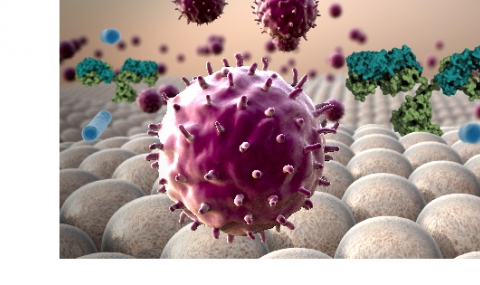HIV enters the host cell by membrane fusion. To this extent it uses its gp41 envelope protein, comprised of several distinct regions. Our lab has extensively studied the contribution of gp41’s fusion peptide, heptad repeats and transmembrane domain to membrane fusion as well as the effects of lipids on this process.
Using the mechanistic knowledge from this work, we have:
- Designed novel peptide based fusion inhibitors, some of which incorporate lipids as an intrinsic part of the molecule.
- Shown that lipids can have an effect on membrane properties, which in turn affects gp41 assembly and CD4 receptor diffusion.
Recently our lab discovered that many of the fusion mediating regions also mediated immunosuppression of T-cells, which we utilize to treat autoimmune diseases such as Multiple Sclerosis in mice. Suppression is achieved by binding of gp41 to the T-cell receptor complex, disrupting receptor assembly.



